How do I know if my child needs Speech & Language Therapy?
How can parents know when a child’s speech and language skills are age appropriate? The buttons below can help you decide if an evaluation is a good idea.
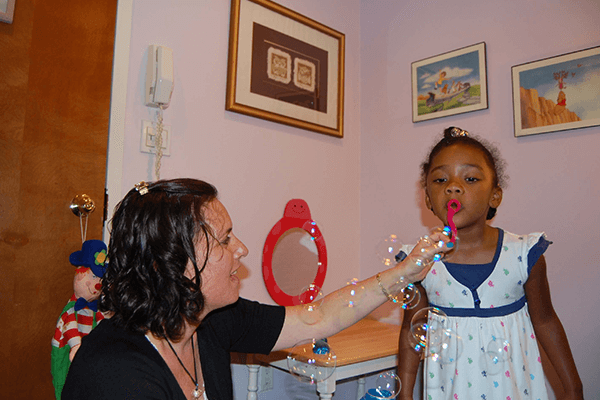
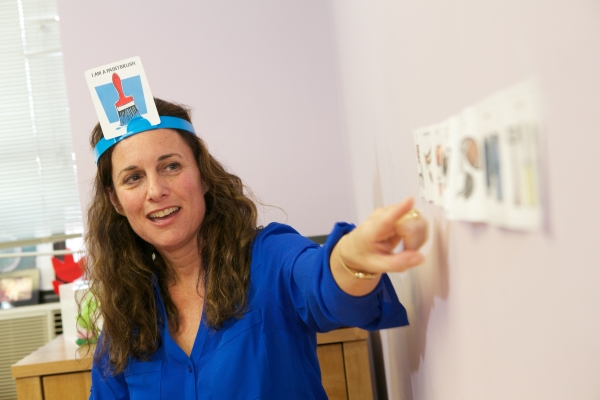
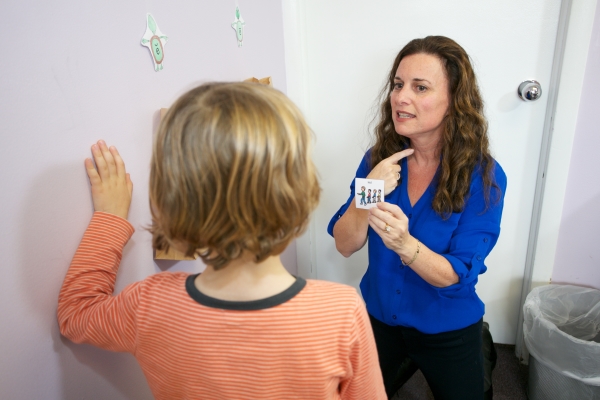
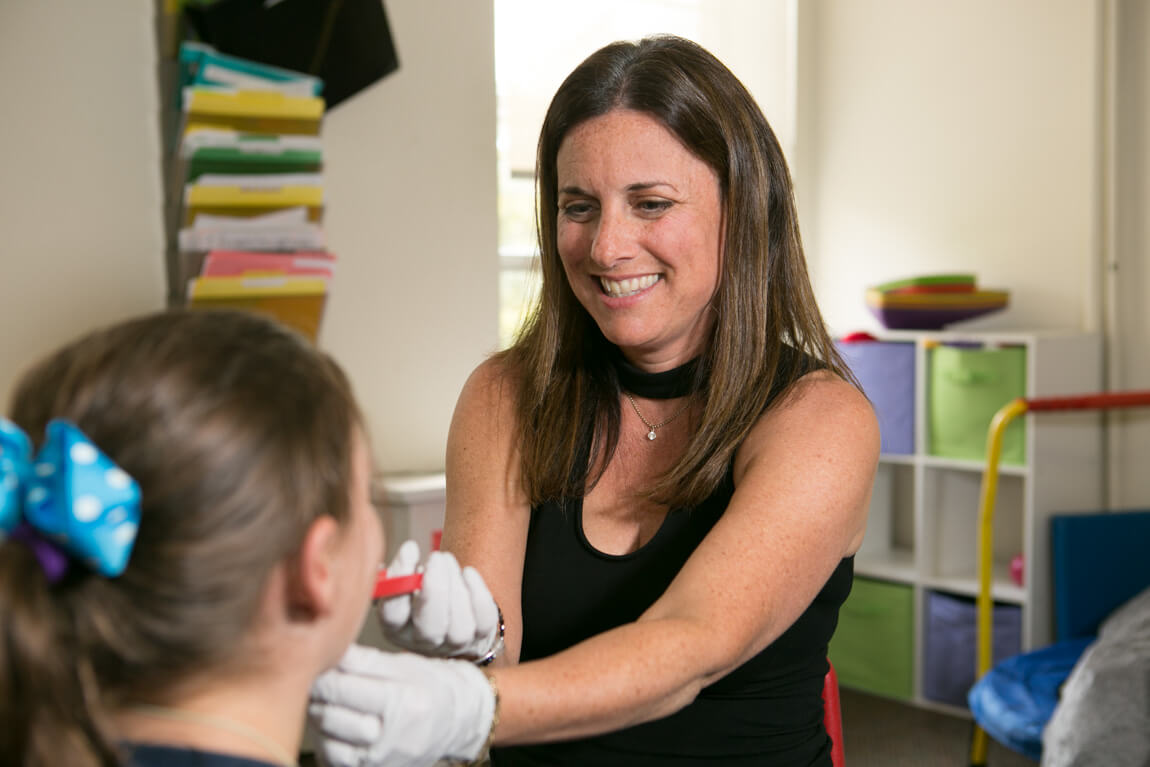
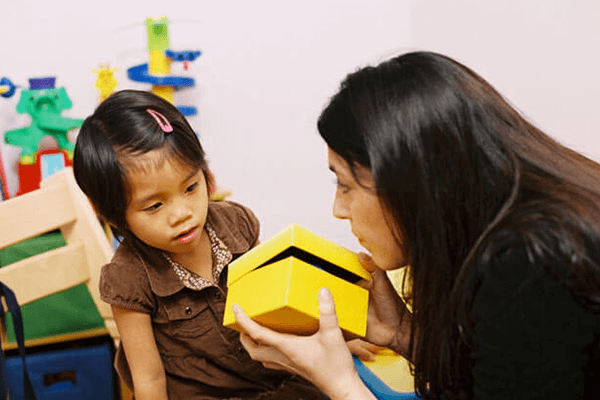
Infants
If your infant struggles with more than three items on the list below, he or she would most likely benefit from therapy.
A one-year-old child typically
- Enjoys peek-a-boo and pat-a-cake
- Recognizes words for common objects
- Listens when spoken to
- Turns toward sounds
- Imitates different speech sounds
- Makes sounds to gain attention
- Uses gestures to communicate (waving, holding arms to be picked up)
- Follows simple directions (i.e. “Come here” or “Want more?”)
- Uses ten words (hi, baba, mama), although they may not be pronounced clearly
Toddlers
If your toddler struggles with more than three items on the list below, he or she would most likely benefit from therapy.
A two-year-old child typically
- Identifies a few body parts
- Enjoys songs and rhymes
- Attends to simple stories
- Uses all vowels sounds
- Points to pictures when described
- Follows one-step commands (“Throw the ball”)
- Understands basic questions (“Where’s your hat?”)
- Asks one or two-word questions (“Where kitty?” “Go bye-bye?” “What’s that?”)
- Produces many different consonant sounds at the beginning of words
- Puts two words together (“more cookie,” “all done”, “no juice,”)
Preschoolers
If your preschooler struggles with more than three items on the list below, he or she would most likely benefit from therapy.
A three-year-old child typically
- Attends to stories
- Is understood by familiar listeners 75% of the time
- Names objects and actions
- Understands opposites (“go-stop,” “in-on,” “big-little,” “up-down”)
- Uses k, g, f, t, d, and n sounds correctly in all positions of a word
- Follows two-step related directions (“Get the crayon and put it on the table”)
- Uses three words phrases (on the average) to express wants and needs
A four-year-old child typically
- Talks about activities
- Uses sentences that, on the average, have four words
- Is understood by unfamiliar listeners 75% of the time
- Uses sh, ch, l, r, s and z sounds correctly in all positions of a word
- Answers simple “who?”, “what?”, “where?”, “when” and “why?” questions.
Kindergarteners
If your kindergartener struggles with more than three items on the list below, he or she would most likely benefit from therapy.
A Kindergartener typically
- Retells a story
- Talks about an event
- Prints first and last name
- Matches sounds to letters
- Uses all standard sounds correctly
- Is understood by most people
- Follows 2-3 step directions in a sequence
- Identifies upper and lowercase letters
- Answers open-ended questions (e.g., “What did you have for lunch today?”)
- Recognizes common words by sight
- Knows how a book works (e.g., English is read from left to right and top to bottom)
- Identifies rhymes (i.e hot and cot)
- Answers simple “yes/no” questions
- Participates appropriately in conversation
- Draws a picture that tells a story, labeling and writing about the picture
School-Age Children
The lists below detail the speech and language skills that are usually mastered in the first and second grades. If your child struggles with more than three items on the list, he or she would most likely benefit from therapy.
Third grade is often a year where very bright children can begin to struggle as the complexity of expectations may no longer be able to be met by adaptive strategies.
As children move further along through elementary school and then up through middle and high school, the academic demands increase and language learning continues to expand.
Parents should collaborate with classroom teachers to determine if their student would benefit from an in-depth evaluation of his or her receptive, expressive and pragmatic language skills.
For more information on this, please read Better Than Average.
By the end of first grade a child can typically:
- Follow 3-4 step directions in a sequence
- Create rhymes
- Identify all sounds in short words
- Blend separate sounds to form words
- Match spoken words with print
- Sound out words (decode) when reading
- Recognize instantly 100 common words
- Understand what they read
- Tell stories and events in a logical order
- Express ideas in complete sentences
- Use grammar correctly
- Ask and respond to “wh” questions (who, what, where, when, why)
- Stay on topic and take turns in conversation
- Give directions
- Start conversations
- Spell frequently used words correctly
- Begin each sentence with capital letters and ends sentences with punctuation
By the end of second grade a child can typically:
- Understand basic concepts (e.g., location, space, and time words)
- Correctly answers questions about a story
- Correlate letter symbols to their sounds automatically (phonics)
- Use context to assist comprehension when reading (e.g., pictures, titles/headings, information in the story)
- Explain key elements of a story (e.g., main idea, main characters, plot)
- Use their own experience to predict events in a story
- Read and retell a story in a sequence
- Read spontaneously
- Use a variety of sentence types
- Use basic punctuation and capitalization appropriately
- Organize their writing to include beginning, middle, and end
- Spell accurately
- Use complex sentences
- Clarify and explain words and ideas
- Give directions with 3-4 steps
- Use oral language to inform, persuade, and entertain
- Stay on topic, take turns, and use appropriate eye contact during conversation
- Open and close conversation appropriately
